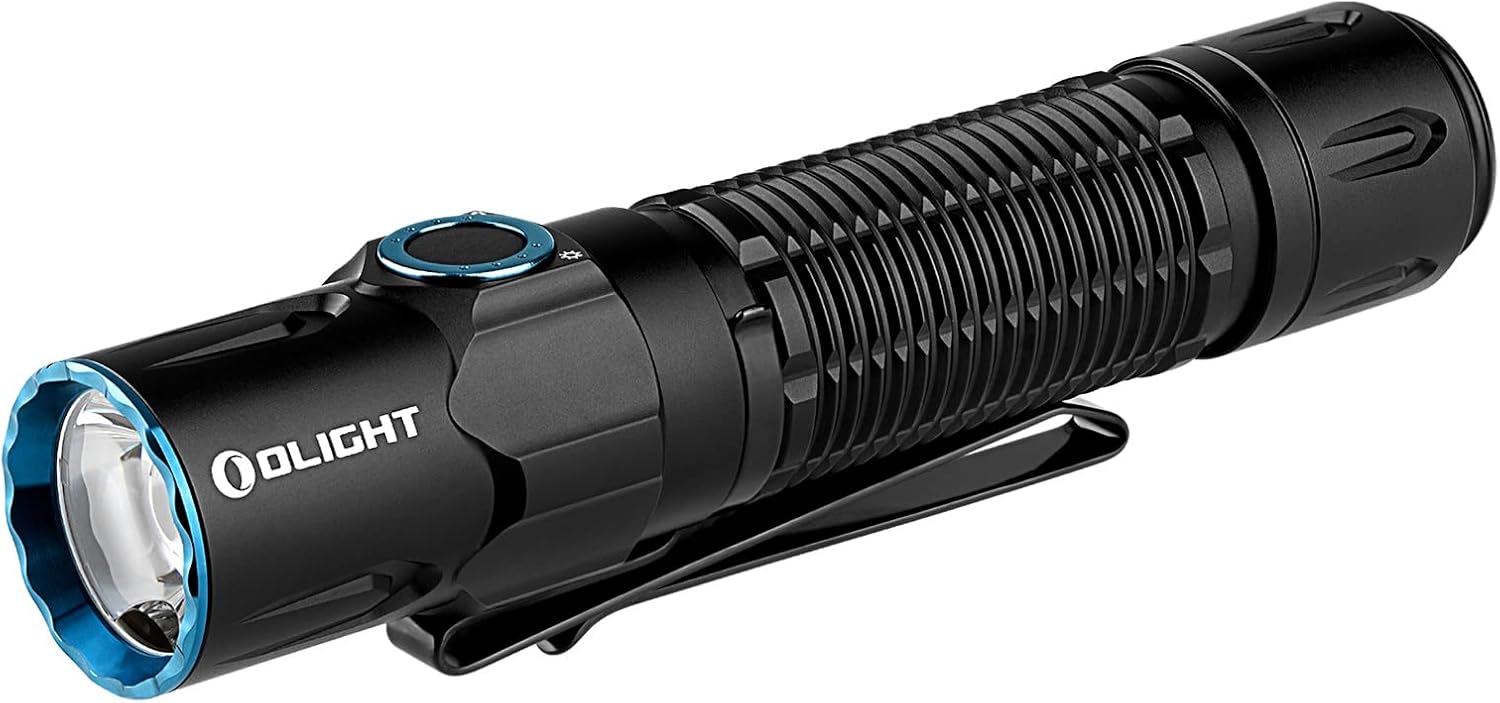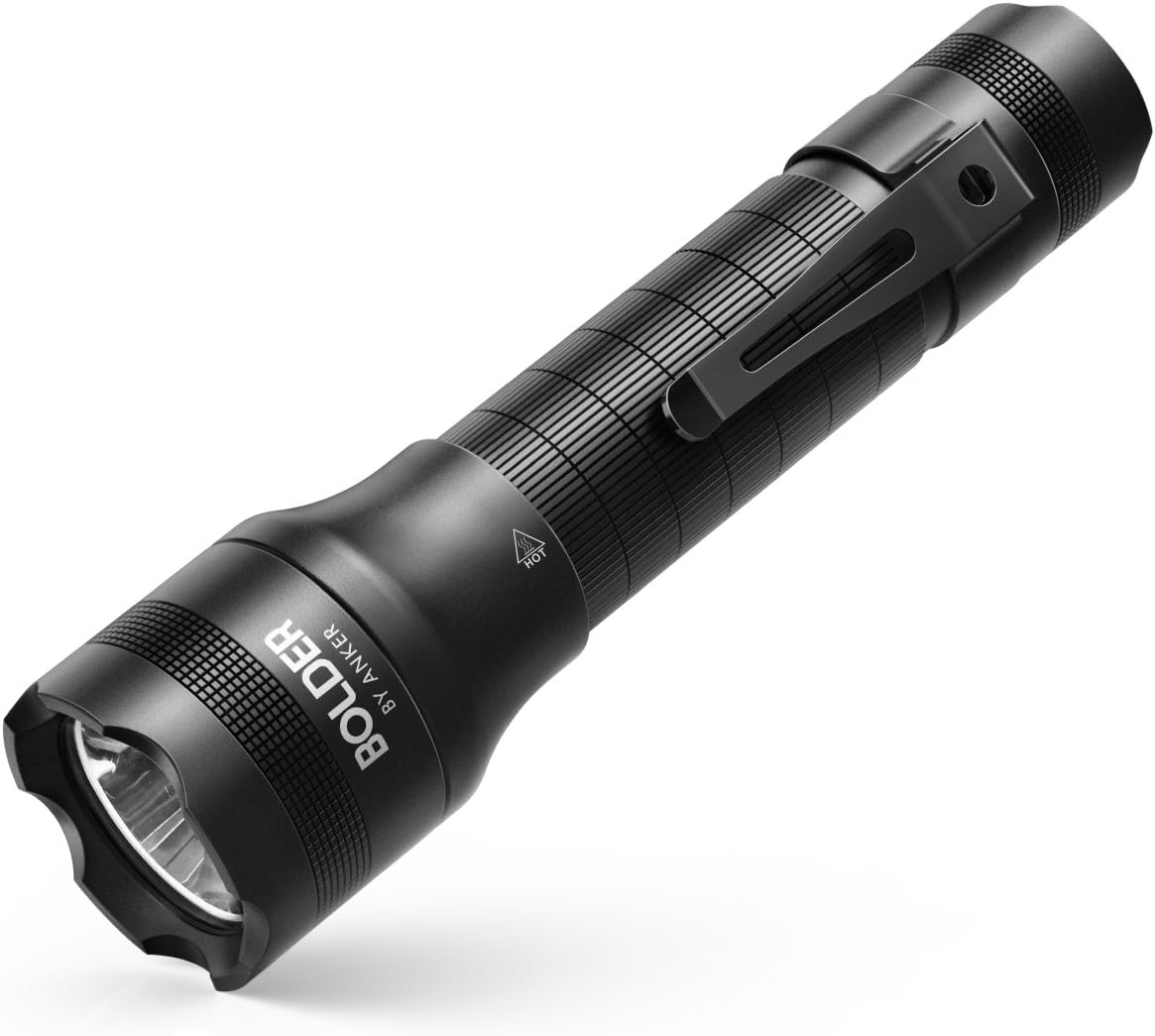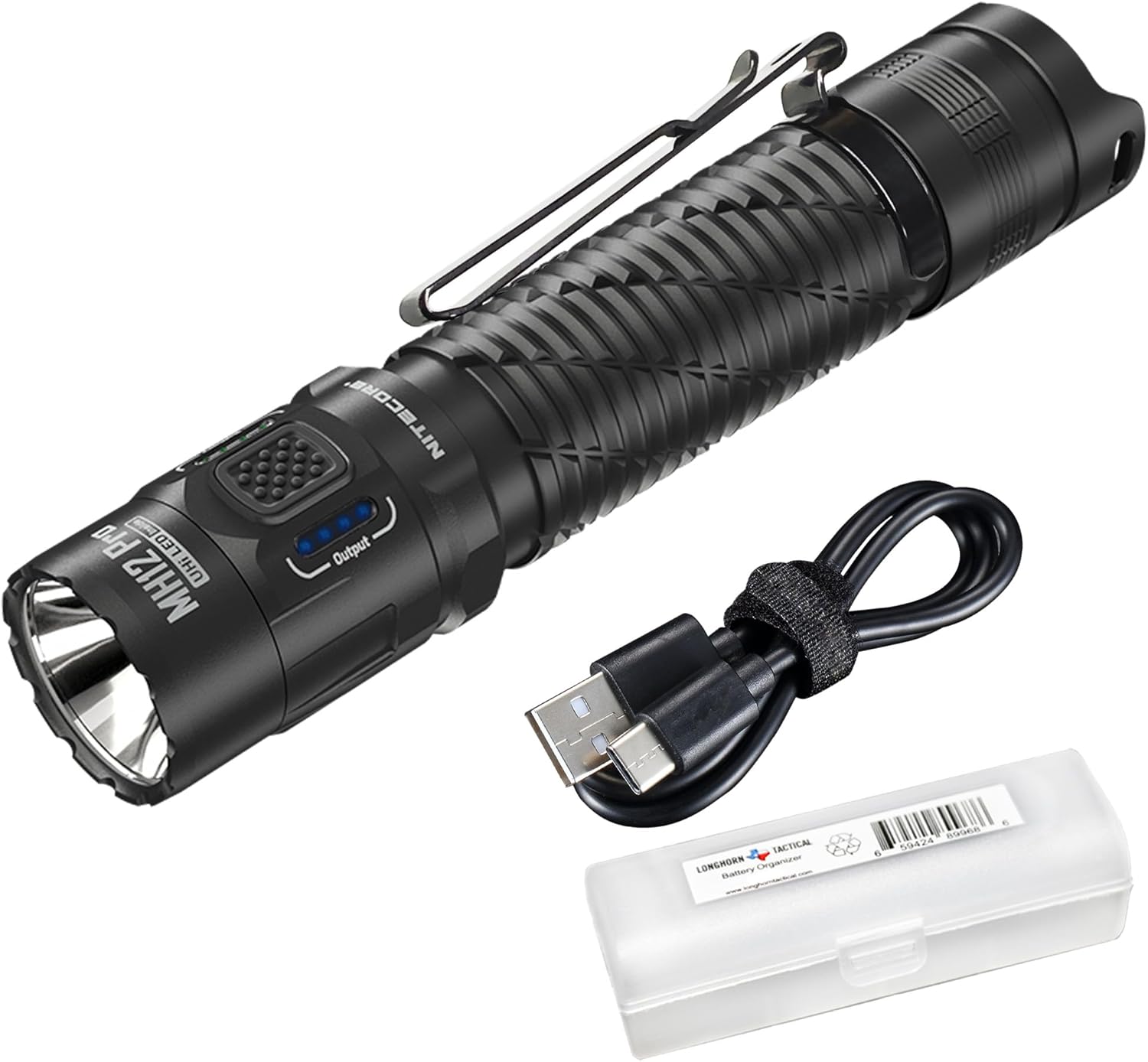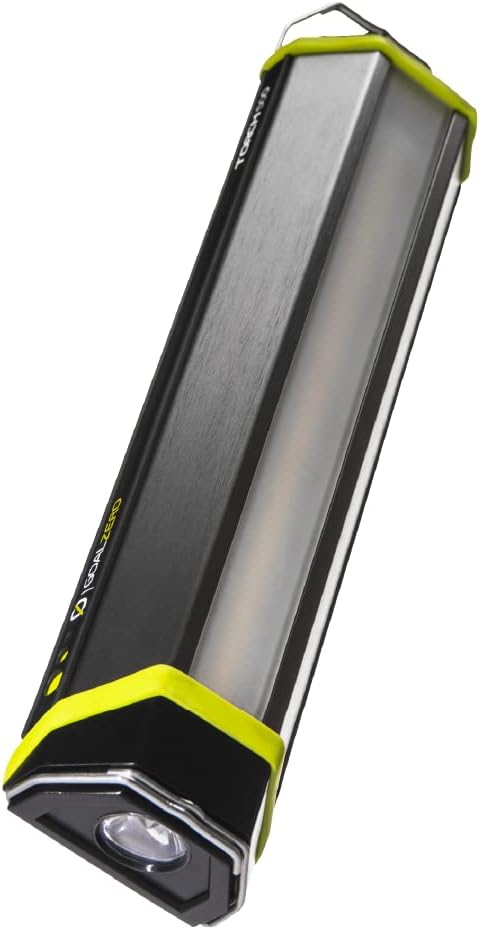When disaster strikes, electricity is often the first thing to go. Power outages can happen anytime—due to storms, natural disasters, grid failures, or even scheduled maintenance. Without light, even the most familiar surroundings become dangerous. A misplaced step on a dark staircase, fumbling around sharp furniture, or trying to cook or find medicine in the dark can quickly become a safety hazard.
That’s why every household should be equipped with at least one reliable rechargeable flashlight—and preferably more than one.
Here’s why it matters:
🔌 Power Outages Are More Common Than You Think
According to data from energy agencies, millions of people experience blackouts every year, many of them lasting several hours or even days. Whether caused by hurricanes, wildfires, snowstorms, or aging infrastructure, outages leave people vulnerable. Flashlights provide immediate illumination when overhead lights won’t.
🧭 Navigation and Safety in the Dark
In the event of a blackout or emergency evacuation, being able to navigate your home or surroundings safely is crucial. Flashlights:
Prevent accidents like trips and falls
Help you locate emergency supplies
Allow you to check your fuse box or power system
Provide light during first aid situations
🔥 Safer Alternative to Candles
Many people turn to candles during outages, but they pose a serious fire hazard, especially in households with children or pets. Rechargeable flashlights provide a safe, flameless alternative with longer runtime and no open flame.
🧯 Vital in Emergency Preparedness Kits
A dependable flashlight is a core component of any emergency or disaster preparedness kit. FEMA and Red Cross guidelines specifically recommend storing a flashlight with extra batteries or built-in rechargeable options. Whether you live in a storm-prone area or a region susceptible to earthquakes, being ready matters.
🌙 Outdoor Use and Nighttime Tasks
Even outside of emergencies, flashlights are incredibly useful:
Walking the dog at night
Searching for items in the attic or basement
Navigating campsites or hiking trails
Checking under the hood of your car
In short, a good flashlight isn’t just for emergencies—it’s a practical tool for everyday life.
🌿 Eco-Friendly & Cost-Effective
Modern rechargeable flashlights eliminate the need for disposable batteries, reducing environmental waste and saving you money over time. Many models now come with USB-C charging, solar panels, or even hand cranks, ensuring you’re not left in the dark even if the grid is down.
Whether you live in an urban apartment or a rural home, the benefits of owning a quality flashlight are universal. With the technology available in 2025, these compact tools have become more powerful, efficient, and versatile than ever before. Investing in a rechargeable flashlight is a smart, affordable step toward safety, sustainability, and peace of mind.
Flashlights come in a variety of styles, each designed with specific use cases in mind. Whether you’re preparing for a power outage, heading out on a late-night hike, or simply want something handy for everyday tasks, understanding the main types of flashlights will help you make a more informed choice.
Tactical flashlights are built for extreme conditions and high performance. Originally designed for military and law enforcement, these flashlights are engineered to deliver intense brightness and withstand rough handling. They typically offer output levels over 1000 lumens, making them suitable for situations where visibility and reliability are critical.
Key features often include:
Exceptionally bright beams (often 1000–3000+ lumens)
Strobe or SOS modes for signaling or self-defense
Durable aluminum construction resistant to impact and weather
Waterproofing (IPX6–IPX8 ratings)
Tail switches for quick, one-handed use
Some models are mountable on weapons or gear
This type of flashlight is a smart choice for those interested in home security, wilderness survival, or any profession requiring nighttime operations. The intense beam and robust build also make them useful during storms, power outages, or navigating unlit areas.
Emergency flashlights prioritize reliability, battery life, and ease of use during crisis situations. Unlike tactical models that focus on maximum power, emergency flashlights are designed to function for extended periods with lower power consumption, often featuring multiple power sources.
Many come equipped with:
Moderate brightness (300–800 lumens) to conserve battery
Built-in rechargeable batteries, sometimes with hand-crank or solar charging
USB ports for charging other devices
Red light modes to preserve night vision
Built-in radios, sirens, or beacons
Ideal for storm kits, glove compartments, and blackout scenarios, these flashlights are especially helpful in homes with children or elderly residents. The focus here is on practicality—lightweight, simple controls, long runtime, and versatile charging options all increase your preparedness level without adding complexity.
Everyday carry flashlights are compact and convenient tools designed for regular use. These are the flashlights you keep in your pocket, keychain, backpack, or purse so they’re ready whenever you need a quick burst of light.
Common traits include:
Lightweight, pocket-sized designs
Rechargeable via USB or USB-C
Brightness levels between 100 and 1000 lumens
Multiple modes (low, medium, high, strobe)
Clips, magnetic bases, or lanyards for portability
Fast and easy access without bulk
Perfect for urban environments, short outdoor walks, or unexpected power cuts, EDC flashlights strike a balance between size and performance. Their portability means you’re more likely to have one on hand when you need it most.
Choosing the right flashlight starts with identifying your main priorities:
If you need maximum brightness, rugged construction, and defensive features, go for a tactical flashlight.
For long-lasting light during emergencies, and added features like solar charging or power bank capabilities, an emergency flashlight is your best bet.
For compact, convenient lighting that’s easy to carry everywhere, a small EDC flashlight will suit your daily routine.
In many cases, it’s wise to have more than one type. A tactical flashlight can be stored with your emergency gear, while an EDC model stays with you for daily needs. Meanwhile, keeping a dedicated emergency flashlight in your home or car ensures you’re covered in case of unexpected outages or roadside issues.
When shopping for a rechargeable flashlight, it’s easy to get overwhelmed by specs and marketing claims. To make a confident choice, it helps to understand the core features that directly impact performance, convenience, and reliability.
Lumens measure the total amount of visible light emitted by a source. The higher the lumens, the brighter the beam. But more lumens isn’t always better—sometimes less is more, especially if you need longer battery life or lower glare for close-range tasks.
| Lumens Range | Best Use Case |
|---|---|
| 50–200 lumens | Close-up tasks (reading, indoor use, keychain lights) |
| 300–600 lumens | General home use, walking at night, emergency lighting |
| 700–1200 lumens | Outdoor use, work lights, larger areas |
| 1200+ lumens | Tactical use, search-and-rescue, wide area illumination |
Tip: Look for models with multiple brightness settings. This allows you to conserve energy when full brightness isn’t necessary and extend battery life in emergencies.
Also consider the beam type:
Spot beams for long-distance visibility
Flood beams for wide, close-range illumination
Some models offer adjustable focus or dual beams for flexibility
Battery life is one of the most critical aspects of a flashlight—especially during extended emergencies, power outages, or overnight trips. Flashlights typically use rechargeable lithium-ion batteries (such as 18650, 21700, or proprietary cells) that offer high capacity and quick charging.
Here’s what to look for:
High-capacity batteries (3000–5000mAh) for longer runtimes
Runtime ratings on different brightness levels
Energy-efficient LED bulbs that generate less heat and use less power
Low-power modes or “moonlight mode” for 100+ hours of light at minimal brightness
Battery status indicators to show remaining charge and prevent surprises
The best flashlights also feature intelligent circuitry that automatically adjusts output to prevent overheating and maximize battery life.
For emergency preparedness, prioritize flashlights that can run on low or medium modes for extended periods. Some flashlights can last days on a single charge if used correctly.
Modern rechargeable flashlights are increasingly USB-powered, allowing for convenient recharging from a wide range of devices including power banks, laptops, solar chargers, and wall plugs.
Micro-USB: Still found in older models, but slower and less durable
USB-C: The new standard in 2025; offers faster charging, reversible connectors, and better power delivery
Magnetic charging: Found on premium models for waterproof designs and secure charging
Many flashlights now support pass-through charging, so you can use the light while it charges—an especially valuable feature during extended outages.
Some models even include power bank functionality, allowing you to charge your phone or other USB devices using the flashlight’s battery. This adds a layer of versatility for emergencies and travel.
While lumens, battery life, and charging are the core features, several secondary factors can greatly enhance the overall user experience:
Water and Impact Resistance
Look for flashlights rated IPX4 or higher for water resistance. IPX7/IPX8 models can survive full immersion, making them ideal for outdoor or storm-prone environments. Impact resistance ratings or drop tests ensure the flashlight can withstand falls and rough handling.
User Interface and Controls
A simple and intuitive control layout can make all the difference in an emergency. Look for:
Single-button operation
Tail switches for quick access
Lock-out modes to prevent accidental activation in your bag or pocket
Memory Mode
Flashlights with memory function remember your last used brightness level, saving time and clicks when you turn them back on.
Mounting Options and Accessories
Magnetic bases, pocket clips, lanyards, and headband compatibility can expand how you use the flashlight. Whether you need hands-free work lighting or a quick attachment to a backpack, these options improve utility.
Choosing the right combination of brightness, battery life, and charging features depends on how and where you plan to use your flashlight:
| Use Case | Recommended Features |
|---|---|
| Power Outages | Long runtime, multiple modes, USB-C charging, memory mode |
| Camping & Hiking | High lumens, water resistance, power bank function |
| Urban Everyday Carry | Compact size, USB-C, quick recharge, clip or keychain attachment |
| Vehicle Emergency Kit | Red light mode, long standby, solar/hand crank options |
| Tactical or Security | 1000+ lumens, strobe mode, rugged build, IPX8 waterproofing |
Rechargeable flashlights have evolved far beyond basic utility items. They are now smart, efficient, and multi-functional tools—but to get the best value and performance, it’s essential to understand the specs. Knowing what lumens mean, how charging works, and what battery life actually looks like in real use will help you make a choice that you can depend on when it counts most.
After extensive comparison and hands-on testing, we’ve curated a list of the top-performing rechargeable flashlights available in 2025. These models were selected based on brightness, battery performance, build quality, feature set, and real-world versatility.

The Fenix PD36R V2.0 is a powerful and versatile flashlight that balances high-end performance with compact portability. It’s a favorite among professionals, outdoor enthusiasts, and homeowners who want one flashlight that can do it all.
Max Brightness: 1700 lumens
Battery: 5000mAh 21700 rechargeable (included)
Runtime: Up to 115 hours on Eco mode
Charging: USB-C fast charging with battery level indicator
Durability: IP68 waterproof and dustproof; 1.5m impact resistance
Beam Distance: 396 meters (1300 feet)
The PD36R V2.0 delivers a crisp, white beam with excellent throw and flood balance. The multiple brightness levels (including a 5-lumen Eco mode and a turbo setting) make it ideal for everything from reading maps to lighting up an entire backyard. The tactical tail switch and side mode switch provide intuitive control.
Exceptional battery life for its brightness level
Compact enough for everyday carry, yet strong enough for tactical use
Durable and weatherproof for outdoor environments
A dependable choice for anyone who wants a single flashlight for home, travel, emergency, and field use.

The Olight Warrior 3S is a tactical-grade flashlight built for high-stress environments. With its blinding output, intuitive dual-switch system, and robust construction, it’s designed for security professionals, night patrols, and extreme outdoor use.
Max Brightness: 2300 lumens
Battery: Custom 5000mAh 21700 rechargeable
Runtime: Up to 55 days on moonlight mode
Charging: Magnetic USB charging cable
Durability: IPX8 waterproof, 1.5m impact resistance
Special Features: Proximity sensor to prevent overheating
This flashlight offers an incredible burst of brightness that can temporarily disorient threats—ideal for self-defense. Its proximity sensor automatically dims the beam when it’s too close to an object, protecting both the light and the user. The textured grip and rigid pocket clip ensure it stays secure during movement.
Combines extreme power with safety features
Includes a strobe mode for emergencies or signaling
Dual switch system (side and tail) for fast, flexible control
This is a go-to flashlight for anyone who needs serious performance in critical scenarios.

The Anker Bolder LC90 is a budget-friendly flashlight that delivers surprising power and reliability for its price. It’s an excellent choice for users who want dependable performance without spending a fortune.
Max Brightness: 900 lumens
Battery: 3350mAh rechargeable battery
Runtime: Up to 6 hours on medium brightness
Charging: Micro-USB
Durability: IP65 water-resistant, aluminum body
Beam Distance: Adjustable focus with zoom lens
This flashlight punches above its weight. It provides ample brightness for most indoor and outdoor tasks, and the adjustable zoom allows you to focus the beam for distance or spread it wide for close-up work. The five light modes offer flexibility in different situations.
Inexpensive yet high-performing
Comfortable grip and intuitive controls
Reliable build for everyday use
A solid entry-level flashlight for homeowners, hikers, or as a backup in your emergency kit.

The Nitecore MH12SE is built for the wilderness. It combines long-range lighting, tactical durability, and USB-C charging—making it an outdoor adventurer’s dream flashlight.
Max Brightness: 1800 lumens
Battery: 5000mAh 21700 lithium-ion
Runtime: Up to 1500 hours on ultra-low mode
Charging: USB-C fast charging
Beam Distance: 405 meters (1328 feet)
Durability: IP68 waterproof, 1m impact resistance
With a powerful beam and multiple output levels, the MH12SE excels in both long-distance navigation and close-up camp tasks. The tactical tail switch enables quick on/off control, while the side switch toggles between modes. It comes with a holster, pocket clip, and tactical ring for secure carry.
Impressive beam throw—ideal for hiking, night rescue, or search operations
Simple interface with memory function
USB-C and wide accessory support
A dependable partner for serious hikers, campers, or anyone spending time in remote areas.

The Goal Zero Torch 500 is designed with disaster readiness in mind. It’s more than a flashlight—it’s a multi-functional survival tool that includes lighting, charging, and solar power capabilities.
Max Brightness: 500 lumens
Battery: 5200mAh internal battery
Runtime: 50 hours (low mode)
Charging: USB-C, built-in solar panel
Durability: IP67 waterproof, rugged housing
Additional Features: Red light mode, floodlight, spotlight, stand, power bank function
This flashlight won’t blind you with brightness, but that’s by design. It’s optimized for longevity and versatility, with enough power to keep your phone or GPS charged during a blackout or while off-grid. The solar panel ensures you always have a way to recharge.
Multiple light sources in one device
Dual charging options (USB-C + solar)
Doubles as a power bank for small electronics
Ideal for emergency kits, car trunks, or homes in disaster-prone regions. It offers peace of mind when other power sources fail.
Each of these flashlights shines in its own category:
| Model | Best Suited For |
|---|---|
| Fenix PD36R V2.0 | All-purpose use, everyday and emergency |
| Olight Warrior 3S | Tactical situations, security, extreme outdoor |
| Anker Bolder LC90 | Budget users, everyday needs, beginner preppers |
| Nitecore MH12SE | Outdoor adventuring, long-range visibility |
| Goal Zero Torch 500 | Emergency preparedness, off-grid living |
A flashlight is one of the most essential tools in any emergency kit, but being fully prepared means thinking beyond just having a source of light. Emergencies—whether blackouts, storms, wildfires, or earthquakes—can happen suddenly and last longer than expected. Here are practical, actionable tips to make sure you’re ready for whatever comes your way.
Relying on a single flashlight can leave you vulnerable if it gets lost, damaged, or runs out of power. Instead, store multiple flashlights in different areas of your home and vehicle.
One in each bedroom (especially near the bed)
One in the kitchen or main living area
One in the garage or workshop
One in your emergency go-bag
One in your car’s glove compartment or trunk
This ensures every family member has quick access to light when the power goes out.
Rechargeable flashlights need to be topped up periodically. Waiting until an emergency hits is too late.
Set a monthly reminder to check and recharge all flashlights
Use flashlights with battery indicators so you always know the charge level
Keep at least one flashlight with solar charging or hand crank backup, especially for long-term outages
For added reliability, consider rechargeable flashlights with removable batteries, so you can keep charged spares on hand.
A well-rounded emergency lighting setup should include more than just handheld flashlights. Consider including:
Headlamps: Hands-free lighting for tasks like cooking or fixing things
Lanterns: Ideal for lighting up larger rooms during power outages
Glow sticks or LED safety lights: Useful for kids or marking exits
Red light mode flashlights: Preserve night vision and are less disruptive when trying to sleep
Store these items with extra batteries, USB cables, or solar chargers as part of your kit.
Take time to familiarize yourself with how your flashlight works before the power goes out.
Practice switching between brightness modes and strobe/SOS settings
Test how long it lasts on different settings
Learn how to lock or unlock it to avoid accidental battery drain
Understand how fast it charges and how long it takes to reach full power
Knowing how to operate your gear confidently can save valuable time and reduce stress during emergencies.
Short outages may last minutes to hours, but storms, grid failures, or disasters can knock out power for days. Be ready for the long haul.
Choose flashlights with eco or low-light modes that can run for 50–100+ hours
Invest in solar panels or crank chargers to keep devices powered
Stock up on USB power banks to recharge flashlights or phones
Flashlights with dual functionality (like power bank support or built-in radios) are extremely useful when communication lines are down.
Emergency situations can force you to evacuate your home or travel in the dark. Your go-bag or vehicle emergency kit should always contain:
A compact flashlight (preferably with USB charging)
Spare batteries or a backup charger
A headlamp or wearable light for hands-free use
Maps or printed emergency contact info (for use if your phone dies)
Make sure the flashlight is rugged and waterproof, as you may be dealing with unpredictable conditions.
Flashlights aren’t just for seeing—they can help others find you in the dark or signal distress.
Use strobe or SOS modes to attract attention
Sweep a bright beam across large areas to flag down rescue or alert others to your location
If stranded in a vehicle or outdoors, place the flashlight in flashing mode behind a window to increase visibility to others
Some flashlights even include beacons or flashing red lights, which are ideal for roadside emergencies or disaster zones.
Many people turn to their smartphones during blackouts, but this is risky.
Phone flashlights drain battery quickly
Your phone is also your communication lifeline—keep it charged
A flashlight offers stronger light, better battery life, and won’t tie up your phone in critical moments
A dedicated flashlight ensures that your phone can be used for calling, texting, or accessing important information without going dark too soon.
In a world where power outages, extreme weather events, and unexpected emergencies are becoming more frequent, having a dependable rechargeable flashlight is no longer a luxury—it’s a necessity. Beyond simply lighting the way, a good flashlight plays a crucial role in ensuring safety, improving visibility, aiding communication, and providing comfort during stressful situations.
Throughout this guide, we’ve explored the key elements that define the best rechargeable flashlights of 2025:
✅ High lumen output for powerful illumination
✅ Long-lasting battery life to endure extended outages
✅ USB-C and solar charging options for convenience and preparedness
✅ Durable, waterproof, and impact-resistant designs for real-world reliability
But choosing the right flashlight is just the beginning. Here are a few practical takeaways to ensure you’re truly prepared:
Own more than one flashlight and keep them in key areas: bedside tables, kitchen drawers, cars, and emergency kits.
Learn how each flashlight works—practice switching modes, using strobe/SOS settings, and checking battery indicators.
Recharge them regularly or invest in models with backup power options like solar or hand crank charging.
Pair your flashlight with other emergency lighting tools, such as headlamps, lanterns, and glow sticks, to create a layered lighting system.
Choose flashlights with additional features—like power bank capability or red light modes—that serve multiple purposes in an emergency.
Also consider your environment and lifestyle when making a selection:
If you live in an area prone to storms or natural disasters, prioritize battery capacity and waterproofing.
For outdoor adventurers, beam distance and rugged build matter most.
For daily use, choose a lightweight, compact model with quick charging and multiple brightness levels.
Emergency readiness is about anticipating the unexpected—and having the tools, knowledge, and confidence to respond when it matters most. A flashlight may seem like a small thing, but in the dark, it becomes one of your most essential tools.